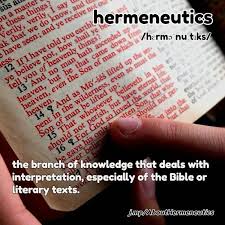The Discipline of Hermeneutics
Regarding Bible
Translations
Define the terms “formally equivalent”
and “functionally equivalent” with regard to translation theories.
Formal equivalent refers to a literary translation of the
Greek and Hebrew text into English syntax.
This process “prioritizes preserving the form and structure of the text
over what is the most intelligible English.”[1]
By seeking to remain as close as possible to the original form of the Greek and
Hebrew language, the form equivalent “may appear awkward, less sensitive to a
contemporary audience, and may sacrifice meaning for form.”[2]
In contrast, the functionally equivalent renders more of a dynamic
interpretation of the Greek and Hebrew language into English. This rendering
seeks to “reflect better English,” placing the “priority on clarity over
grammar and syntax.” Another way to define the functional is that it brings the
text closer to the language of the contemporary reader (an attempt to reproduce
the same effects as experienced by the original audience).[3]
